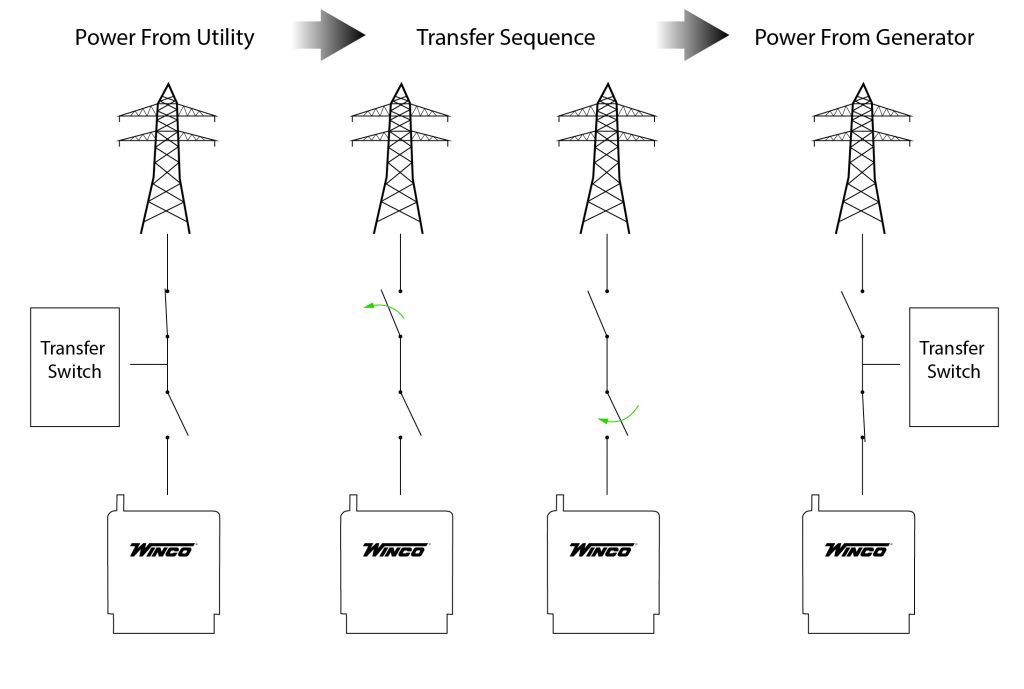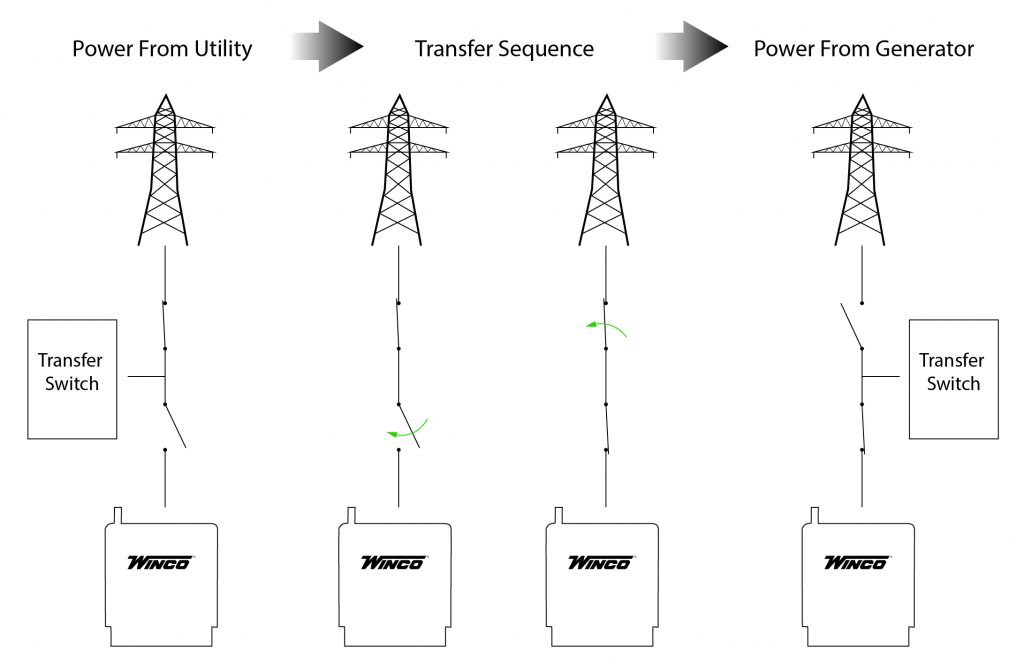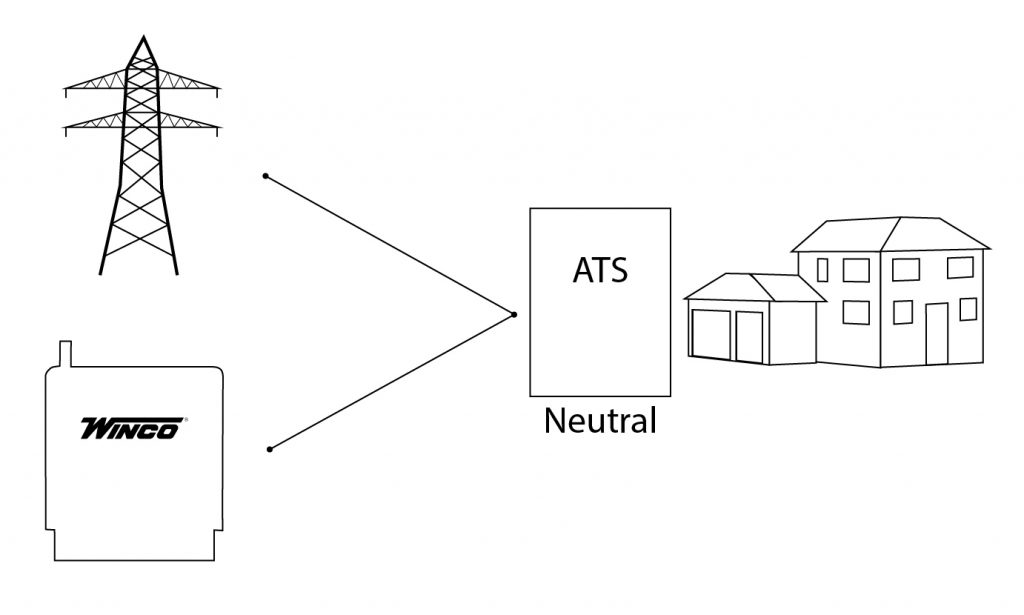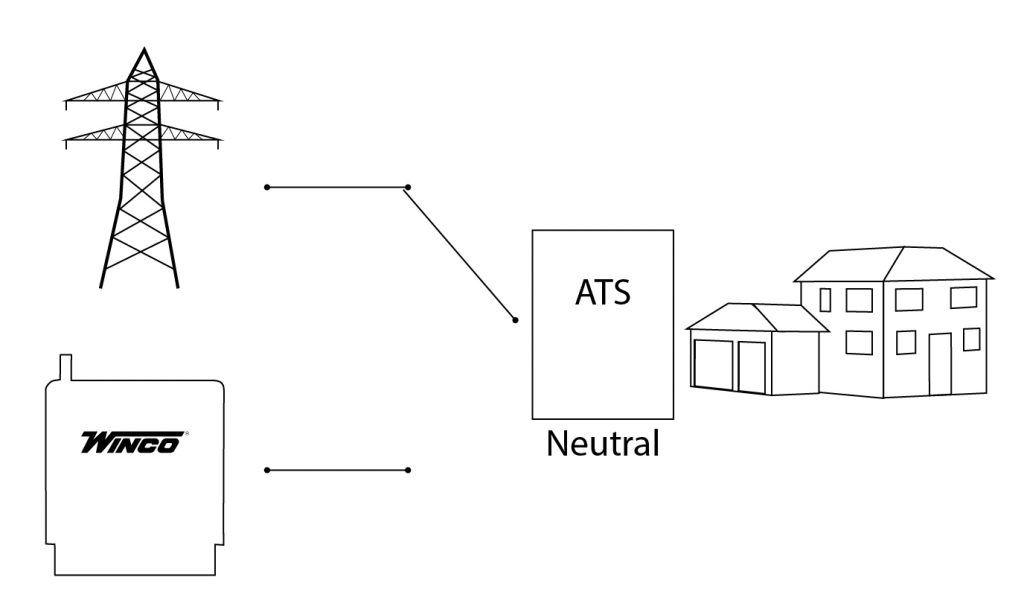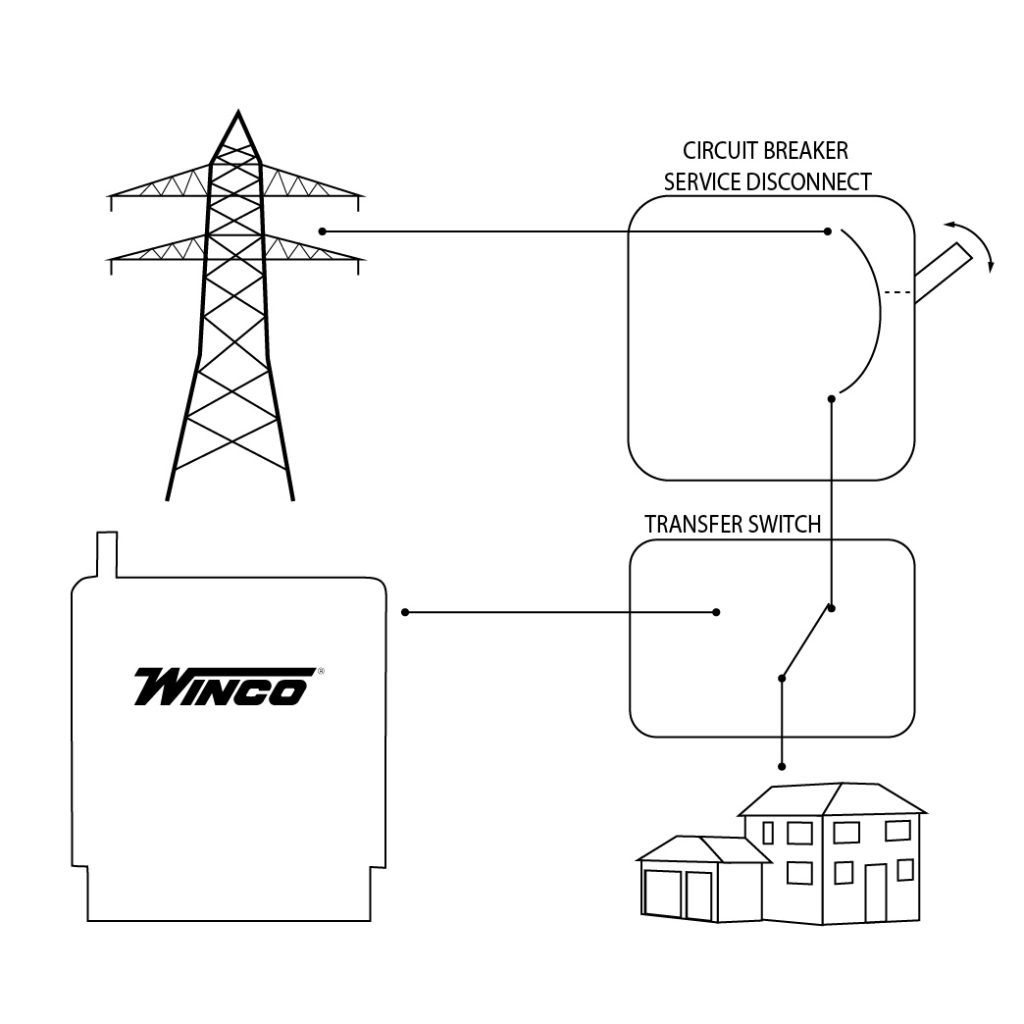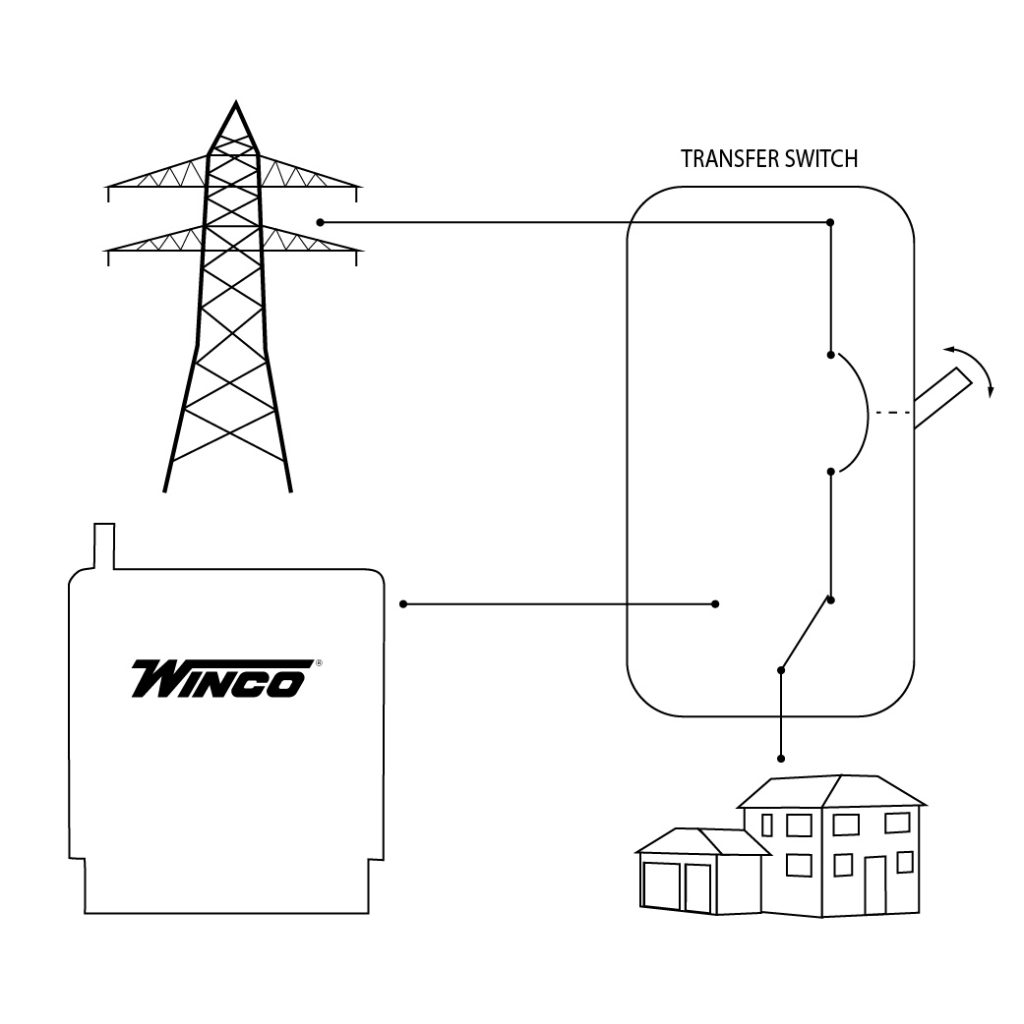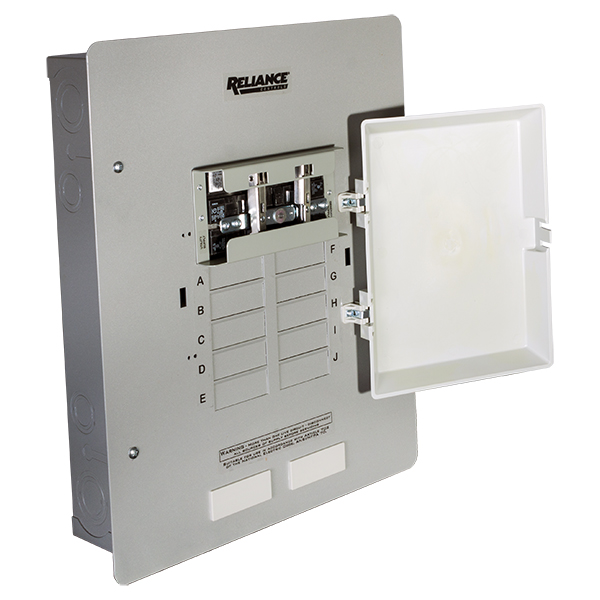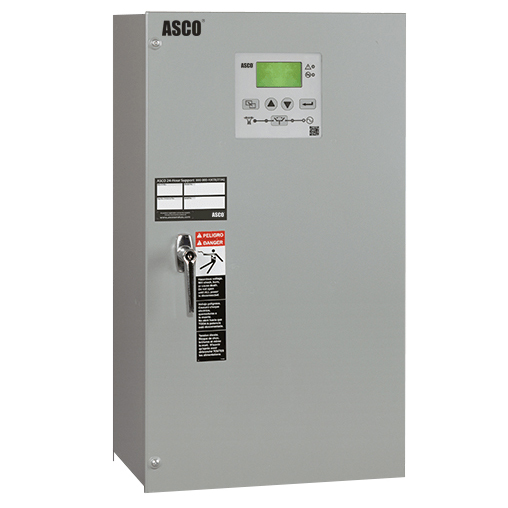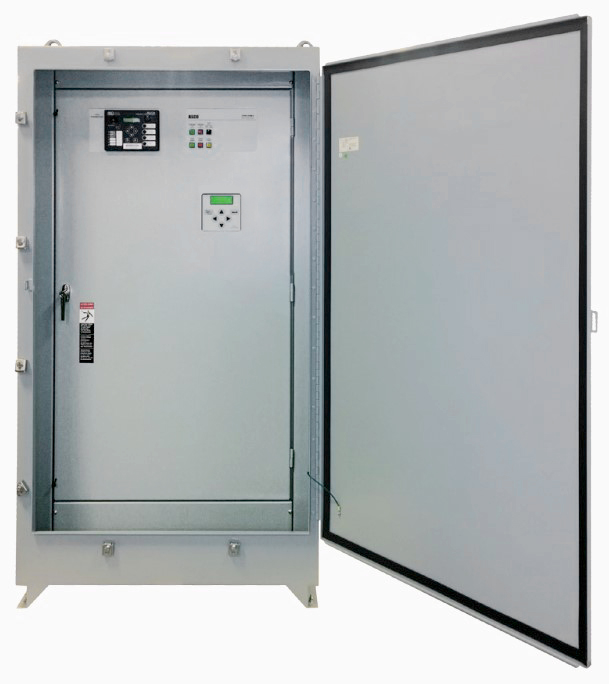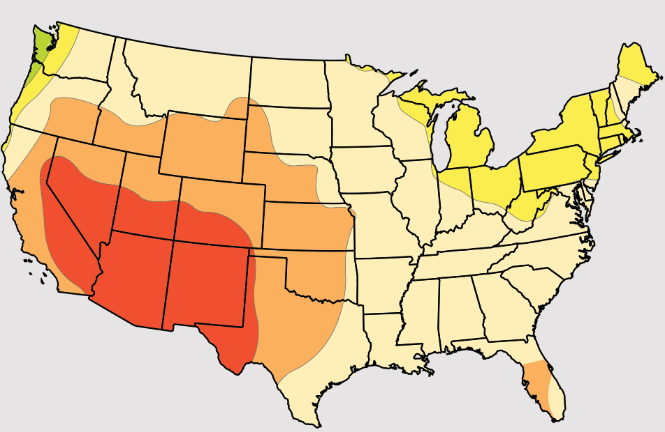When choosing a transfer switch, you will have to decide if you need an open or closed transition transfer switch. Basically, you need to ask yourself if you have critical loads that cannot have disruption of power, not even for a split second.
OPEN TRANSITION
You may have heard this called a break-before-make transfer switch. With this type of transition, the transfer switch breaks contact with one power source before it makes contact with the another. The flow of electricity will be interrupted, therefore preventing backfeeding. This is a split second transfer with an automatic transfer switch. If you have a three position manual transfer switch, utility and generator are on their own sides with the middle position being the full disconnect ‘off’ position.
CLOSED TRANSITION
You may have heard this called a make-before-break transfer switch. With a closed transition, your generator is momentarily running in parallel with utility power. Typically, you will install this in a hospital or critical care facility that requires zero interruption of power. If neither power sources are available, the transfer switch must operate in a open transition mode, ensuring back feeding cannot occur.

